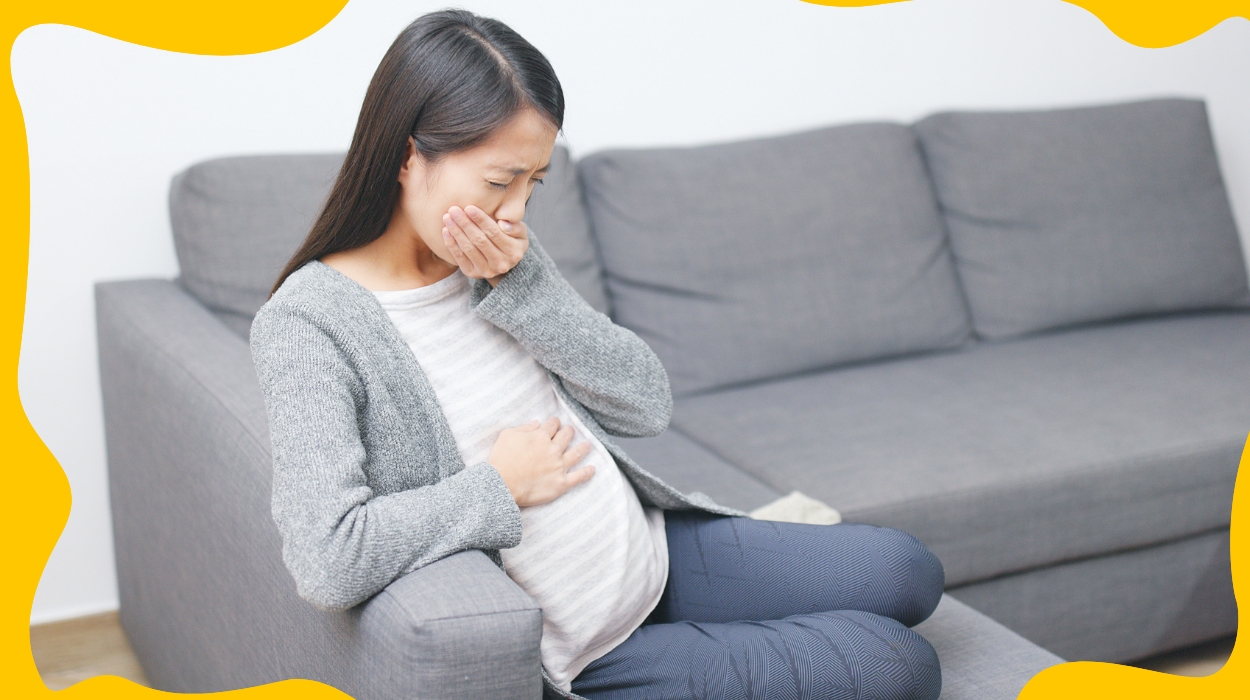Nontoxic Sofa: Why You Should Own It & Factors To Consider

As consumers become more aware of the harmful effects of toxic chemicals in their homes, the demand for nontoxic products has skyrocketed. One area where this trend has gained particular traction is in upholstered furniture, specifically the nontoxic sofa. Nontoxic sofas are couches made without harsh chemicals commonly found in traditional furniture, such as polyurethane foam, flame retardants, and heavy metals. The benefits of owning a nontoxic sofa are numerous, including better indoor air quality, reduced exposure to dangerous substances, and a safer, healthier home[1]. However, with so many options available, choosing the best non-toxic sofa for your home can be overwhelming. In this article, we will explore why you should own a nontoxic sofa, the factors to consider when choosing one, and some of the best non-toxic sofa brands on the market. Factors to consider include the use of organic fabrics, solid wood frames, and natural cushion fill. Other important considerations include certifications such as GOTS-certified organic cotton and Global Organic Latex Standard[2] (GOLS) certified organic latex. So whether you are in the market for a new sofa or just curious about the benefits of nontoxic furniture, read on to learn more.
Nontoxic Sofa: Why You Should Own It?
- Non Toxic couches are made without toxic substances commonly found in traditional furniture, leading to better indoor air quality and reduced exposure to toxins.
- They are a safer and healthier option for you and your family, especially those with allergies or sensitivities.
- Organic materials and natural cushion fill make non toxic couches environmentally friendly and sustainable.
- Choosing a nontoxic sofa shows a commitment to reducing your carbon footprint and supporting responsible manufacturing practices.
- With the rise of nontoxic options on the market, many stylish and affordable options are now available for those looking to make the switch.

Toxic Chemicals Commonly Used In Normal Sofas
- Nontoxic sofas are made without toxic substances commonly found in traditional furniture, leading to better indoor air quality and reduced exposure to toxins.
- They are a safer and healthier option for you and your family, especially those with allergies or sensitivities.
- Organic materials and natural cushion fill make nontoxic sofas environmentally friendly and sustainable.
- Choosing a nontoxic sofa shows a commitment to reducing your carbon footprint and supporting responsible manufacturing practices.
- With the rise of nontoxic options on the market, many stylish and affordable options are now available for those looking to make the switch.
Toxic Chemicals Commonly Used In Normal Sofas
Traditional sofas may contain a variety of toxic substances, including:
- Chemical flame retardants[3], such as polybrominated diphenyl ethers (PBDEs), have been linked to health problems such as cancer, developmental delays, and reproductive issues.
- Polyurethane foam[4] can emit volatile organic compounds (VOCs) and contains potentially harmful additives such as formaldehyde and benzene.
- Harsh glues and adhesives[5] that can contain VOCs and other toxic substances.
- Synthetic fabrics and dyes may contain heavy metals or other toxic substances.
- Engineered wood and particleboard[6] that may contain formaldehyde and other volatile chemicals.
- A leather couch may be treated with chemicals such as chromium and formaldehyde[7].
- Stain-resistant treatments[8] can contain per and poly-fluoroalkyl substances (PFAS) linked to cancer and other health issues.
These chemicals can pose risks to human health and the environment, making nontoxic sofa options preferable.
Factors To Consider When Choosing A Nontoxic Sofa
When choosing the best non toxic couch brands, consider the following factors:
- Materials: Look for sofas made from organic, natural, and sustainable materials, such as GOTS-certified organic cotton or wool, FSC-certified solid wood frames, and natural latex foam.
- Fire retardants: Choose sofas labeled as “flame retardant-free” or “without added flame retardant chemicals.”
- Adhesives and finishes: Look for sofas that use low-VOC glues and finishes to minimize the off-gassing of toxic substances.
- Upholstery: Consider options like natural fabrics, such as linen and hemp, or recycled and upcycled materials to reduce waste.
- Certifications: Look for sofas certified by reputable organizations, such as GOTS (Global Organic Textile Standard)[9] and CertiPUR-US[10], which ensure that the materials and manufacturing processes meet strict environmental and health standards.
- Brand reputation: Research the brand and manufacturer to ensure they are committed to using nontoxic and sustainable practices.
- Price: Looking for an affordable non toxic couches may be more challenging since they are more expensive than traditional options, but consider the long-term health and environmental benefits when deciding.
Are Second Hand Sofas Actually Safe?
The safety of secondhand sofas depends on several factors, such as the age, condition, and materials used in the sofa. If the sofa was manufactured before the implementation of regulations regarding the use of fire retardants and other toxic substances, it might contain these substances. Similarly, if the sofa has been damaged or is in poor condition, it may release harmful dust or fibers that can be inhaled. However, the sofa may be a safer option if it is relatively new and well-maintained. It is always a good idea to ask the seller about the sofa’s history and inspect it carefully before purchasing. Additionally, if you are concerned about the safety of a secondhand sofa, consider having it professionally cleaned or reupholstered using nontoxic materials.
Conclusion
In conclusion, owning a nontoxic couch is a wise choice for those looking to reduce their exposure to toxic substances and protect their health and the environment. When choosing a non toxic couch, consider factors such as the materials used, certifications, and manufacturing practices. Additionally, it is vital to be aware of the toxic elements commonly used in normal sofas and the potential risks associated with second hand sofas. By making an informed decision and investing in a nontoxic couch, you can enjoy a comfortable and safe living space for yourself and your family.
Frequently Asked Questions
Some common materials used in the best non toxic couches include organic cotton, wool, natural latex foam, solid wood frames, and water-based adhesives.
Not necessarily. While organic materials are often used in nontoxic couches, it is important to check for certifications and manufacturing practices to ensure that the sofa is truly non-toxic.
Some certifications to look for include Global Organic Textile Standard (GOTS), Global Organic Latex Standard (GOLS), CertiPUR-US, and Forest Stewardship Council (FSC) certification for wood.
Yes, eco-friendly sofas can be just as comfortable as traditional sofas. Natural materials like organic cotton and wool can provide comfortable cushioning, and natural latex foam can offer similar support to traditional foam.
The best non toxic sofas can be more expensive than traditional sofas, but affordable options are also available. Comparing prices and considering a non toxic couch’s long-term health and environmental benefits is essential.
The best way to know if sofas contain flame retardants is to ask the manufacturer or seller for information. You can also look for labels or certifications that indicate that the sofa is flame-retardant-free.
It may be possible to make your current sofa non toxic by having it professionally reupholstered using non-toxic materials. However, this can be costly and may only be feasible for some sofas.
Yes, owning a non toxic sofa can reduce exposure to toxic substances and potentially improve indoor air quality, which can positively impact respiratory health and overall well-being.
+ 10 Sources
Health Canal avoids using tertiary references. We have strict sourcing guidelines and rely on peer-reviewed studies, academic researches from medical associations and institutions. To ensure the accuracy of articles in Health Canal, you can read more about the editorial process here
- https://www.ncbi.nlm.nih.gov/pmc/articles/PMC1447995/
- Certifications. (2022). GOLS – Global Organic Latex Standard. [online] Available at: https://certifications.controlunion.com/en/certification-programs/certification-programs/gols-global-organic-latex-standard.
- https://www.ncbi.nlm.nih.gov/pmc/articles/PMC7781237/
- https://www.ncbi.nlm.nih.gov/pmc/articles/PMC8451937/
- https://www.ncbi.nlm.nih.gov/pmc/articles/PMC8519568/
- https://www.ncbi.nlm.nih.gov/pmc/articles/PMC8880566/
- Swenberg, J.A. (2013). Formaldehyde Carcinogenicity Research: 30 Years and Counting for Mode of Action, Epidemiology, and Cancer Risk Assessment – James A. Swenberg, Benjamin C. Moeller, Kun Lu, Julia E. Rager, Rebecca C. Fry, Thomas B. Starr, 2013. [online] Toxicologic Pathology. Available at: https://journals.sagepub.com/doi/10.1177/0192623312466459.
- https://www.sciencedirect.com/science/article/abs/pii/S0169433217313600
- Global-standard.org. (2023). Home – GOTS. [online] Available at: https://global-standard.org/.
- Team, C. (2023). Home. [online] CertiPUR-US. Available at: https://certipur.us/.






